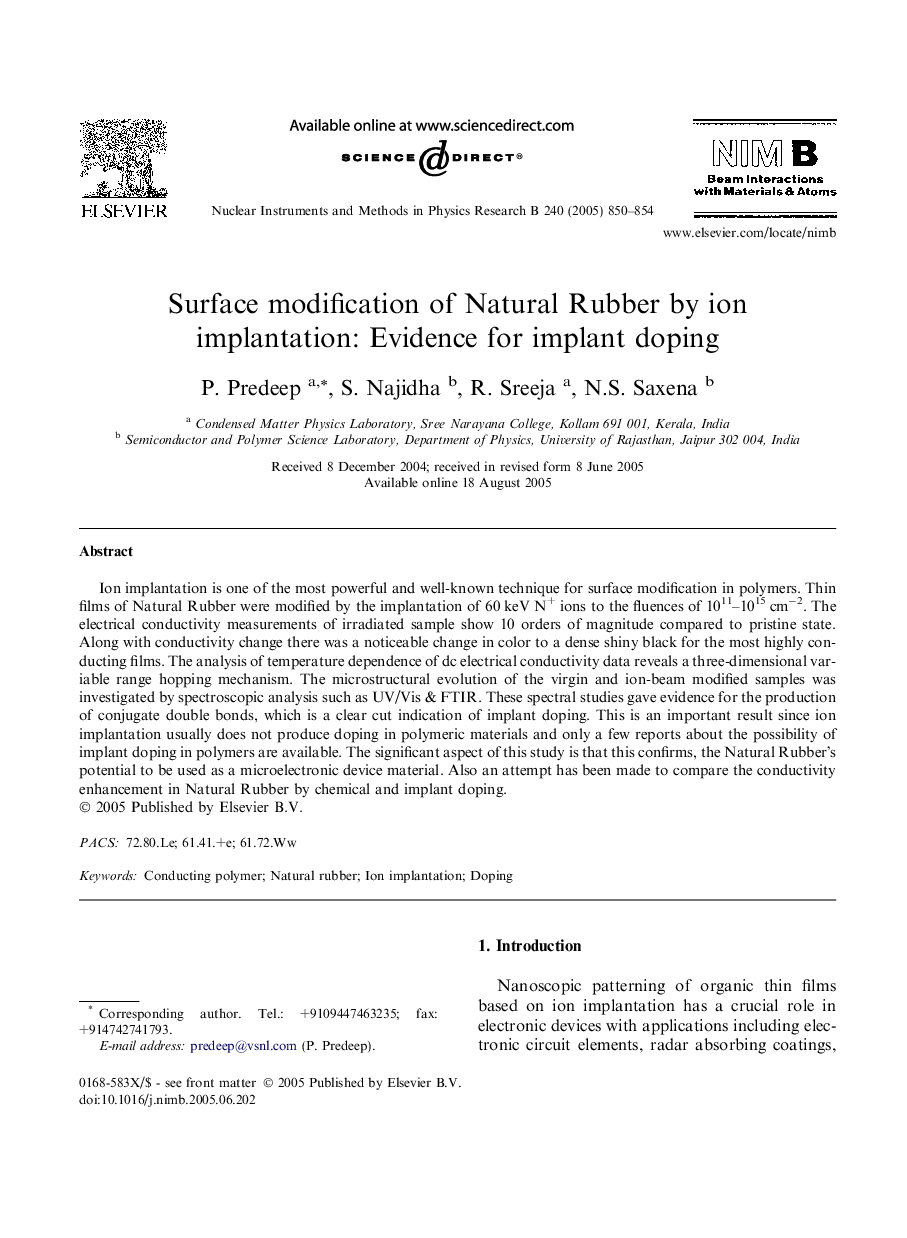| Article ID | Journal | Published Year | Pages | File Type |
|---|---|---|---|---|
| 9817494 | Nuclear Instruments and Methods in Physics Research Section B: Beam Interactions with Materials and Atoms | 2005 | 5 Pages |
Abstract
Ion implantation is one of the most powerful and well-known technique for surface modification in polymers. Thin films of Natural Rubber were modified by the implantation of 60Â keV N+ ions to the fluences of 1011-1015Â cmâ2. The electrical conductivity measurements of irradiated sample show 10 orders of magnitude compared to pristine state. Along with conductivity change there was a noticeable change in color to a dense shiny black for the most highly conducting films. The analysis of temperature dependence of dc electrical conductivity data reveals a three-dimensional variable range hopping mechanism. The microstructural evolution of the virgin and ion-beam modified samples was investigated by spectroscopic analysis such as UV/Vis & FTIR. These spectral studies gave evidence for the production of conjugate double bonds, which is a clear cut indication of implant doping. This is an important result since ion implantation usually does not produce doping in polymeric materials and only a few reports about the possibility of implant doping in polymers are available. The significant aspect of this study is that this confirms, the Natural Rubber's potential to be used as a microelectronic device material. Also an attempt has been made to compare the conductivity enhancement in Natural Rubber by chemical and implant doping.
Related Topics
Physical Sciences and Engineering
Materials Science
Surfaces, Coatings and Films
Authors
P. Predeep, S. Najidha, R. Sreeja, N.S. Saxena,
